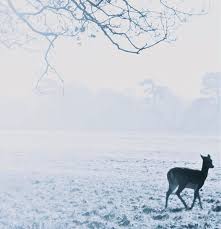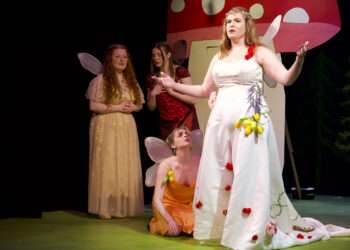
It’s been a hideous week in Britain. The referendum campaigning has worked itself up into a fever of nastiness, and the silence that then fell on the country after the shocking, senseless murder of MP Jo Cox just made what had gone before seem even more shrill and pointless. Out of that silence, as we begin to think about what our country has done to itself, the music of William Byrd, Thomas Tallis and Arvo Pärt, sung by The Sixteen in Durham Cathedral last night resonated with extra poignancy and meaning, in the music itself and in the stories of those who created it, and it was wholly fitting that The Sixteen dedicated their performance to the memory of Jo Cox.
The Sixteen brought immediate comfort with the opening motet, Byrd’s Diliges Dominum, the text appropriately reminding us to love our neighbours, and they transformed the incredible structural complexities of this piece into a soothing balm. The programme booklet helpfully included a copy of the manuscript: four simple lines which become a canon and a palindrome, creating eight-part polyphony from this simple fragment. There were more compositional puzzles of this type in the programme, and although, as the notes helpfully reminded us, the listener is not expected to be able to hear and identify all the mathematical tricks, The Sixteen and Harry Christophers were able to communicate their own understanding of the musical structures. The effect is like looking at spectacular cathedral vaulting: you’re not quite sure how it works but the result is beautiful.
I’ve been to five or six Choral Pilgrimage concerts, and I’m used to hearing a very silky, even sound from The Sixteen, but this time, I heard a sharper edge, a little more variety in the texture of the sound, which made the longer works on the programme, more characterful and interesting than I had expected. Byrd’s Ad Dominum cum tribularer throbbed with anger through the psalmist’s pleas in the first section to be freed from lies and deceit; the altos introduced brief calm with their lead on ‘Heu mihi’ (Woe is me) but by the end, the singing had turned bellicose again, clamouring for war. In Tribue Domine Byrd, as he does so often, uses his music to make coded statements about the Roman Catholic church, and here the references to the undivided Trinity were given significant weight by The Sixteen.
The concert’s title ‘The Deer’s Cry’ comes from a piece of that name by Arvo Pärt, a prayer of St Patrick whose words are also known as Patrick’s Breastplate (‘Christ with me, Christ before me, Christ behind me…’). Harry Christophers made the most of the cathedral acoustic here: the tiny fragments of music in the first few lines were given lots of space, and even though the singers were quiet, they were able to make the sound ring around the nave. As the piece builds to its climax, the music truly seemed to come from all directions, conveying the message in the text that Christ is everywhere.
The pitches in Renaissance music have no fixed abode, and The Sixteen generally go for singing everything quite high, showing off their brilliant sopranos, so it was nice in the works by Pärt to hear what their basses can do too. In The Woman with the Alabaster Box they were thrillingly resonant in the words of the indignant disciples, while the sopranos’ endlessly long note was poured out in an unbroken stream, like the precious perfume falling on Christ’s feet in the story, and the piece ended in glass-like, fragile beauty. Pärt’s Nunc Dimittis built up slowly from the basses, creating his distinctive otherworldly bell sounds – an in a nice accident of timing, the sound of the cathedral bells striking the quarter hour drifted through the silences here. Pärt uses a mixture of open fourths and fifths and close dissonances to create the effect of a bell’s harmonic overtones: his music needs a choir with laser-straight voices and impeccable tuning, to do this effectively, so it’s ideal for The Sixteen. The joy and light that they brought to the Nunc Dimittis was one of the loveliest things on this evening’s programme.
The story of Arvo Pärt’s own life speaks for itself and needs no comment: he left an oppressive life in the Soviet Union and found a home in Germany, and his native Estonia has made a similar journey from repression to European freedom. But what of Byrd and Tallis? We’re used to thinking of Byrd, in particular, as a victim, part of a repressed minority in a deeply divided nation, but the Cantiones Sacrae, from which The Sixteen drew tonight’s programme give another side to the story. Although Latin music was officially banned in church, Queen Elizabeth allowed the two men to write and publish this treasure-trove of motets in Latin, probably so that she could show off her composers to Europe, and because she herself enjoyed high Latin polyphony. The message I have chosen to take from hearing The Sixteen’s selection from the Cantiones Sacrae is one of pragmatism, tolerance, a desire to be part of European culture, and above all, a reminder of the incredible healing power of music.






